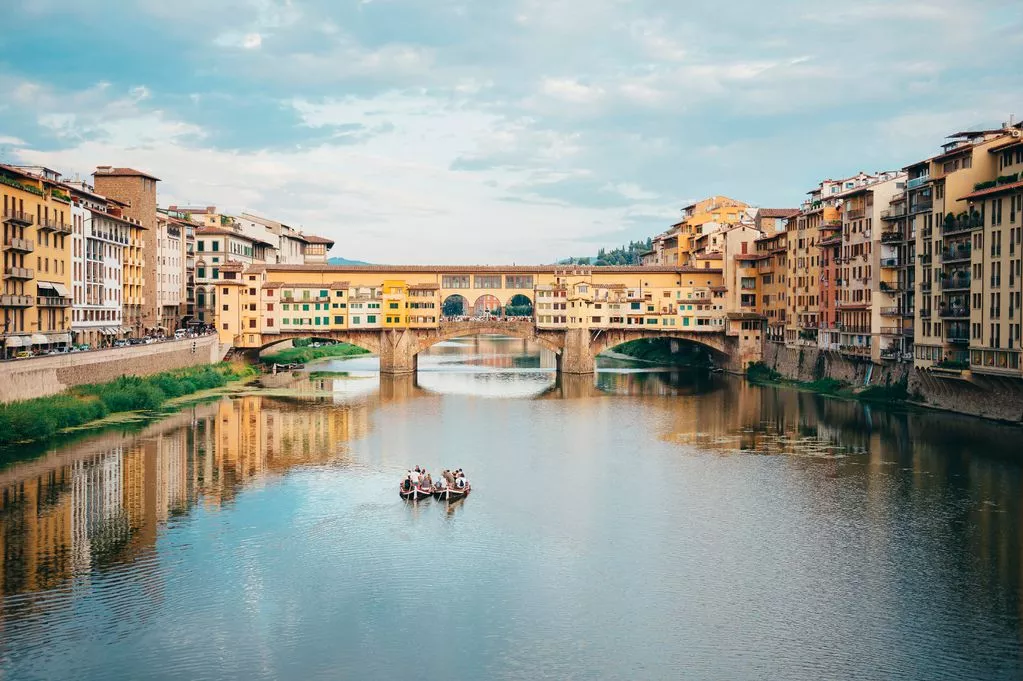Florence: A Renaissance City Under Tourist Pressure
Florence, famously celebrated as the cradle of the Renaissance, attracts an astounding 5.2 million tourists each year. This influx translates to roughly 10 visitors every minute in a city home to just 362,000 residents. For every local, approximately 15 tourists arrive annually, stressing urban infrastructure and community life.
The city center, home to the bulk of Florence’s 2,000 hotels, experiences particularly intense tourist and hotel density. This concentration, coupled with elevated noise levels and notable light pollution, generates an environment far from peaceful, challenging the city’s historic charm and atmosphere.
Iconic Artworks and Overwhelming Crowds
Florence’s most treasured artworks, including Michelangelo’s David housed in the Galleria dell’Accademia and masterpieces like Botticelli’s Primavera and The Birth of Venus in the Uffizi Gallery, are magnets for global visitors. These locales often suffer from extreme overcrowding, where visitors jostle shoulder-to-shoulder, selfie sticks in hand, vying for a glimpse. This experience bears resemblance to viewing the Mona Lisa in Paris—marked by barriers and limited proximity due to soaring demand.
Cultural Hubs and Urban Livelihoods
Despite the city’s vast offer of cultural treasures, the bustling Piazza della Signoria presents an overwhelming scene with street performers, noisy crowds, and an intense tourist buzz. This environment contributes to a rare tension between the city’s cultural heritage and daily urban life.
Turning to Tuscany’s Calmer Corners: Lucca as a Serene Alternative
For travelers seeking a more relaxed and authentic experience near Florence, the smaller city of Lucca stands out. Located about an hour away by train, Lucca offers a quarter of Florence’s size but boasts well-preserved Renaissance walls that double as an elevated promenade for pedestrians and cyclists, usually free from the heavy tourism crowd.
Lucca reveals a balance between rich cultural depth and tranquility. Visitors can explore landmarks such as the Guinigi Tower and the unique Piazza dell’Anfiteatro, as well as the childhood home of composer Giacomo Puccini. The city’s character is maintained by cafés and eateries that manage to feel inviting without becoming overcrowded, assuring a distinctly laid-back ambiance.
Key Features of Florence and Lucca Compared
| Aspect | Florence | Lucca |
|---|---|---|
| Population | 362,000 | ~90,000 |
| Annual Visitors | 5.2 million | Significantly fewer |
| Tourist Density | Very High, especially in historic center | Low to Moderate; walls and center less crowded |
| Major Attractions | Michelangelo’s David, Uffizi Gallery, Renaissance art | Guinigi Tower, Piazza dell’Anfiteatro, Puccini’s home |
| Atmosphere | Busy and noisy | Relaxed and charming |
The Historical Context of Tourism Overload
Over-tourism is not a new phenomenon but has intensified due to global economic growth, ease of travel, and the proliferation of online travel platforms. Cities like Florence, steeped in cultural and artistic heritage, have long drawn visitors fascinated by history and art. However, their ancient infrastructures and limited space render managing millions of visitors per year a notable challenge.
Historically, tourism growth in such cities followed a pattern whereby initial enthusiasm turned into local concerns over congestion, cultural commodification, and ecological impact. Recent studies identify that when the ratio of tourists to residents skews too heavily, quality of life and tourist satisfaction can both decline.
Managing Tourist Pressure for Future Sustainability
To address these challenges, destination managers are increasingly advocating for strategies such as dispersing tourists to lesser-known sites, promoting off-peak visitation, and developing alternative regional attractions to reduce pressure on key urban areas. This approach supports a sustainable balance between tourism benefits and the preserving of cultural authenticity.
Looking Ahead: The Role of Alternative Destinations in International Tourism
The rising crowding issues in iconic cities like Florence highlight the importance of turning to nearby, less crowded destinations. Regions around cultural hubs often develop as appealing options for travelers who seek historical immersion without the claustrophobic mass of tourists. This trend will likely shape the future of international tourism, encouraging more diverse itineraries and supporting local economies beyond the traditional hotspots.
Tourist Behavior and Destination Choice
- Travelers increasingly seek authentic experiences away from crowded monuments.
- Alternative spots like Lucca promise cultural depth and a quieter atmosphere.
- Seasonal and timed visits help manage visitor flows, enhancing the quality of experience.
Understanding these shifts offers valuable insights into how destinations can remain competitive by balancing appeal with sustainability, preserving local culture while meeting travelers’ increasing desire for unique experiences.
Summary and Conclusion
The pressure of millions of visitors on Florence has shaped complex challenges from crowding to environmental impact, altering the city’s historic charm and daily life. Nearby Lucca emerges as a compelling alternative, offering a taste of Renaissance history without the stresses of heavy tourism. Historically, managing high tourist density has required thoughtful planning and innovative strategies to protect cultural sites and community wellbeing.
As international travelers progressively value more serene and authentic destinations, this shift could redefine popular Mediterranean travel routes and enhance regional economies. For sailing enthusiasts looking to combine cultural exploration with cruising along beautiful coastal waters, destinations offering both bustling urban sights and peaceful retreats are invaluable.
For those planning to rent a yacht or a sailing boat and explore Europe’s captivating coasts, choices matter not only in the sea but also on land. The GetBoat.com platform stands out as an international marketplace for renting yachts and sailing boats, providing excellent options to enjoy the perfect blend of maritime adventure and cultural sightseeing across well-known and off-the-beaten-path destinations along the Mediterranean and beyond.

 Florence Crowds Spur Shift to Quieter Tuscan Destinations">
Florence Crowds Spur Shift to Quieter Tuscan Destinations">
